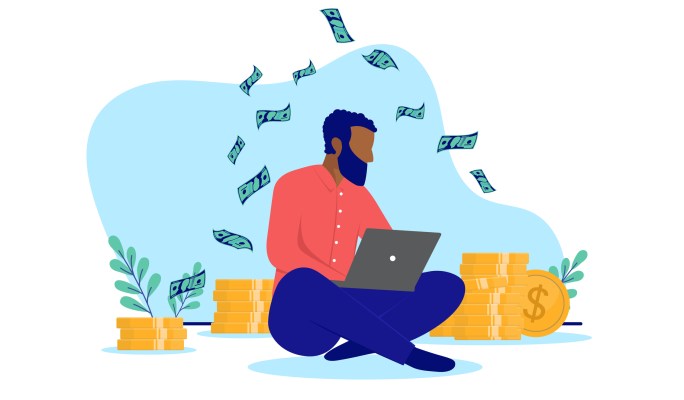While it’s often held that the early-stage investing market has generally fared better in this funding slowdown of the last 18 months or so, things haven’t actually been very good for pre-seed startups trying to raise money.
Thankfully, it appears the pre-seed market is starting to recover, per new data from Carta, which provides cap table management software for startups.
More: 5 founders discuss why SAFEs are better for early-stage and bridge rounds
The news is not all good, though — for founders, at least. The data indicates investor-friendly terms are becoming more common, which is not entirely unexpected. As the venture market has cooled and investors became pickier, founders have found it more difficult to bargain for clean term sheets or aggressive valuations.
 So, what can founders expect if they’re looking to raise their first round of capital these days? Let’s find out.
So, what can founders expect if they’re looking to raise their first round of capital these days? Let’s find out.
Shameless plug: The Builders Stage at Disrupt this year is going to have a lot of related material on fundraising and scaling startups. Come hang out!
The good, the bad, the pre-seed
Altogether, pre-seed startups that use Carta raised $972 million in the second quarter, 17% more than they did in the first quarter. That kind of recovery feels material, but the difference is stark when you consider the fact that funding to pre-seed startups remained above the $1.40 billion mark throughout the first half of 2022.
(Note that Carta’s customers are mostly based in the United States, so this data primarily reflects trends in the U.S.)
Still, it seems fewer deals were closed in that period, marking the fourth straight quarter of declines in the number of pre-seed deals: Carta recorded 1,608 pre-seed rounds in the second quarter, down from 1,820 in the first quarter.
More dollars with fewer rounds appears to be the story of the pre-seed market in these times. Now, let’s get into the weeds.
How are pre-seed startups raising today, and at what terms?
We’re not going to talk about every type of pre-seed round that we have data on. Instead, we’re going to focus on simple agreements for future equity (SAFEs), because this deal structure outnumbered convertible notes handily in the second quarter: 1,365 SAFE deals versus 250 convertible note deals, per Carta. That means if we want to know how most startups are raising money, we need to focus on SAFEs.
Zooming into the SAFE data, it appears post-money SAFE deals were the most common. Cooley, a law firm with numerous startup clients, defines the difference between pre- and post-money SAFE deals as:
With a Pre-Money SAFE, the conversion into equity does not include the conversion of the SAFEs in its calculation. Consequently, a Post-Money SAFE does include the conversion of the SAFEs in the equity calculation.
That’s simple enough.
If SAFEs are the most common pre-seed instrument and post-money SAFEs the most common variety, accounting for 89% of the total amount raised by pre-seed startups in the second quarter, they are what we need to care about the most.
And post-money SAFEs are changing. Of all the post-money SAFE deals that Carta recorded in the past couple of years, at least 65% had valuation caps but no discount. In simpler words: The invested money would convert at a valuation no higher than a set amount, giving investors a bottom floor for how efficiently their funds would turn into shares.
So far in 2023, only 49% of post-money SAFE deals had valuation caps without a discount, and the share of deals that had both a cap and a discount has shot higher this year, rising to 47% from 28% in 2022. That’s not good news for founders, because a SAFE deal with both a valuation cap and a discount can lead to investors owning a larger share of a startup than they otherwise might; in general, a cap-and-discount SAFE will usually lead to founders owning less of their startup than either factor would on its own.
About half of the most common pre-seed deal structure that Carta saw in the second quarter, then, was both capped and discounted. Investors really are taking the reins back!
There’s more: About 76% of the capped and discounted SAFE deals carried a discount rate of at least 20%. Another 8% had discounts between 21% and 49%, and a few had even more extreme measures in favor of investors.
Does that seem onerous? Depends on how you think about invested capital and pre-seed risk.
There’s one more factor to consider: The median pre-seed SAFE valuation has declined for five of the last six quarters — falling to $10 million in Q2 2023, down from $15 million in Q1 2022, according to Carta.
It appears investors are more frequently getting better terms on SAFE deals at lower prices. Perhaps that explains why we’re seeing more dollars go to work in pre-seed, at least per Carta’s data. Who wouldn’t want to get busy with their checkbook when goods are cheap?
If you’re a founder just starting out, it might feel good to know that there’s more capital flowing in your direction. Just expect it to be harder than before to actually get that money, and if you do, it will cost you more than it did for startups that raised money just a few quarters ago.
